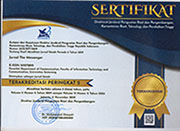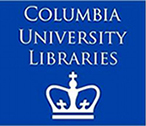Trump s Twitter Propaganda During Covid-19
Abstract
Keywords
Full Text:
PDFReferences
Allcott, H., & Gentzkow, M. (2017). Social media and fake news in the 2016 election. Journal of Economic Perspectives, 31(2), 211 236. https://doi.org/10.1257/jep.31.2.211
Aro, J. (2016). The Cyberspace War: Propaganda and Trolling as Warfare Tools. European View, 15(1), 121 132. https://doi.org/10.1007/s12290-016-0395-5
Auerbach, J., & Castronovo, R. (2013). Introduction: Thirteen Prepositions about Propaganda. In J. Auerbach, & R. Castronovo, The Oxford Handbook of Propaganda Studies. New York: Oxford University Press.
Auerbach, J., & Russ, C. (n.d.). Introduction: Thirteen propositions about Propaganda. Oxford University Press.
Barclay, D. A. (2018). Fake News, Propaganda, and Plain Old Lies: How to Find Trustworthy Information in the Digital Age. Maryland: Rowman & Littlefield.
Bastos, M. T., & Mercea, D. (2019). The Brexit Botnet and User-Generated Hyperpartisan News. Social Science Computer Review, 37(1), 38-54. https://doi.org/10.1177%2F0894439317734157
BBC. (2020). Coronavirus: US death toll passes 50,000 in world s deadliest outbreak. https://www.bbc.com/news/world-us-canada-52415579
B ©land, D., Rocco, P., Segatto, C. I., & Waddan, A. (2021). TRUMP, BOLSONARO, AND THE FRAMING OF THE COVID-19 CRISIS: How Political Institutions Shaped Presidential Strategies. World Affairs, 184(4), 413 440. https://doi.org/10.1177/00438200211053314
Benkler, Y., Robert, F., & Hal, R. (2018). Network propaganda: Manipulation, disinformation, and Radicalization in American Politics. Oxford University Press.
Bennet, B. (2020). Why Coronavirus May Be the Biggest Threat Yet to Donald. https://time.com/5800093/coronavirus-donald-trump-2020-election/
Besheer, M. (2020). Trump Offers China Any Help to Fight Coronavirus. https://www.voanews.com/science-health/coronavirus-outbreak/trump-offers-china-any-help-fight-coronavirus
Boyte, K. (2017). An Analysis of the Social-Media Technology, Tactics, and Narratives Used to Control Perception in the Propaganda War Over Ukraine. Journal of Information Warfare, 16(1), 88 111. https://www.jstor.org/stable/26502878
Buccoliero, L., Bellio, E., Crestini, G., & Arkoudas, A. (2020). Twitter and politics: Evidence from the US presidential elections 2016. Journal of Marketing Communications, 26(1), 88 114. https://doi.org/10.1080/13527266.2018.1504228
Carlson, M. (2020). Fake news as an informational moral panic: the symbolic deviancy of social media during the 2016 US presidential election. Information Communication and Society, 23(3), 374 388. https://doi.org/10.1080/1369118X.2018.1505934
Carlson, M. (2018). Fake news as an informational moral panic: the symbolic deviancy of social media during the 2016 US Presidential Election. Information, Communication & Society, 374-388. https://doi.org/10.1080/1369118X.2018.1505934
Carter, D. P., & May, P. J. (2020). Making sense of the U.S. COVID-19 pandemic response: A policy regime perspective. Adminstrative Theory & Praxis, 42(2), 265-277. https://doi.org/10.1080/10841806.2020.1758991
Castillo, C., Mendoza, M., & Poblete, B. (2011). Information Credibility on Twitter. WWW '11: Proceedings of the 20th international conference on World Wide Web. Hyderabad: Association for Computing Machinery. https://doi.org/10.1145/1963405.1963500
Cox, J. (2020). US payrolls plunge 701.000 in March amid the start of a job market collapse. Retrieved May 29, 2020, from CNBC: https://www.cnbc.com/2020/04/03/jobs-report-march-2020.html
Chatfield, A. T., Reddick, C. G., & Brajawidagda, U. (2015). Tweeting propaganda, radicalization and recruitment: Islamic state supporters multi-sided Twitter networks. ACM International Conference Proceeding Series, 27-30-May-2015, 239 249. https://doi.org/10.1145/2757401.2757408
Donald A. Barclay. (2018). Fake News, Propaganda, and Plain Old Lies: How to Find Trustworthy Information in the Digital Age. Rowman & Littlefield.
Figueira, ., & Oliveira, L. (2017). The current state of fake news: Challenges and opportunities. Procedia Computer Science, 121, 817 825. https://doi.org/10.1016/j.procs.2017.11.106
Francia, P. L. (2018). Free Media and Twitter in the 2016 Presidential Election: The Unconventional Campaign of Donald Trump. Social Science Computer Review, 36(4), 440 455. https://doi.org/10.1177/0894439317730302
Gross, J. H., & Johnson, K. T. (2016). Twitter Taunts and Tirades: Negative Campaigning in the Age of Trump. PS: Political Science & Politics, 49(4), 748 754. https://doi.org/https://doi.org/10.1017/S1049096516001700
Higgins, T. (2020). Trump thanks China s Xi Jinping for handling of coronavirus. https://www.cnbc.com/2020/01/24/trump-thanks-chinas-xi-jinping-for-handling-of-coronavirus.html
H ¶ller, M. (2021). The human component in social media and fake news: the performance of UK Opinion Leaders on Twitter during the Brexit campaign. European Journal of English Studies, 25(1), 80-95. https://doi.org/10.1080/13825577.2021.1918842
Hughes, H. J., & Waismel-Manor, I. (2021). The Macedonian Fake News Industry and the 2016 US Election. PS: Political Science & Politics, 55(1), 19-23. https://doi.org/10.1017/S1049096520000992
Khaldarova, I., & Pantti, M. (2016). Fake News: The narrative battle over the Ukrainian conflict. Journalism Practice, 10(7), 891 901. https://doi.org/10.1080/17512786.2016.1163237
Khan, G. F., Swar, B., & Lee, S. K. (2014). Social Media Risks and Benefits: A Public-Sector Perspective. Social Science Computer Review, 32(5), 606 627. https://doi.org/10.1177/0894439314524701
Lasco, G. (2020). Medical populism and the Covid-19 pandemic. Global Public Health, 15(10), 1417-1429. https://doi.org/10.1080/17441692.2020.1807581
Lasswell, H. D. (1927). The Theory of Political Propaganda. In the American Political Science Review, 21(3).
Linden, S. v., Panagopoulos, C., & Roozenbeek, J. (2020). You are fake news: political bias in perceptions of fake news. Media, Culture & Society, 42(3), 460-470. https://doi.org/10.1177%2F0163443720906992
Mahase, E. (2020). ovid-19: Trump threatens to stop funding WHO amid China-centric claims. BMJ, 369, 1.438. https://doi.org/10.1136/bmj.m1438
Makhortykh, M., & Lyebyedyev, Y. (2015). #SaveDonbassPeople: Twitter, Propaganda, and Conflict in Eastern Ukraine. The Communication Review, 18, 239-270. http://dx.doi.org/10.1080/10714421.2015.1085776.
Mejias, U. A., & Vokuev, N. E. (2017). Disinformation and the media: the case of Russia and Ukraine. Media, Culture and Society, 39(7), 1027 1042. https://doi.org/10.1177/0163443716686672
Muller, J. (2020, March 14). What Trump s Twitter Feed Tells Him About the Coronavirus. https://www.politico.com/news/magazine/2020/03/14/trump-coronavirus-twitter-feed-covid-19-129170
Muqsith, M. A. (2019). Effect Fake News for Democracy. Jurnal Cita Hukum-Indonesian Law Journal, 7(3), 307 318. https://doi.org/10.15408/jch.v7i3.12956
Muqsith, M. A., & Pratomo, R. R. (2021). SALAM Jurnal Sosial dan Budaya Syar-i The Development of Fake News in the Post-Truth Age. 8(5), 1391 1406. https://doi.org/10.15408/sjsbs.v8i5.22395
Muqsith, M. A., Ridho Pratomo, R., Zaina, A. G., & Kuswanti, A. (2021). Fake News as a Tool to Manipulate the Public with False Information.
Pain, P., & Masullo Chen, G. (2019). The President Is in: Public Opinion and the Presidential Use of Twitter. Social Media + Society, 5(2), 205630511985514. https://doi.org/10.1177/2056305119855143
Pramuk, J. (2020). Trump signs phase one trade deal with China in push to stop economic conflict. Retrieved May 22, 2020, from CNBC: https://www.cnbc.com/2020/01/15/trump-and-china-sign-phase-one-trade-agreement.html
Prier, J. (2017). Commanding the Trend: social media as Information Warfare. Strategic Studies Quarterly, 11(4), 50-85.
Riffe, D., Lacy, S., & Fico, F. (2014). Analyzing Media Messages: Using Quantitative Content Analysis in Research (Third Edition). Routledge.
Ross, A. S., & Caldwell, D. (2020). Going negative : An APPRAISAL analysis of the rhetoric of Donald Trump on Twitter. Language and Communication, 70, 13 27. https://doi.org/10.1016/j.langcom.2019.09.003
Rufai, S. R., & Bunce, C. (2020). World leaders usage of twitter in response to the COVID-19 pandemic: A content analysis. Journal of Public Health (United Kingdom), 42(3), 510 516. https://doi.org/10.1093/pubmed/fdaa049
Rutledge, P. E. (2020). Trump, Covid-19, and the War on Expertise. American Review of Public Administration, 50(6 7), 505 511. https://doi.org/10.1177/0275074020941683
Shereen, M. A., Khan, S., Kazmi, A., Bashir, N., & Siddique, R. (2020). Covid-19 infection: Origin, transmission, and characteristics of human coronaviruses. In Journal of Advanced Research, 24, 91 98. Elsevier B.V. https://doi.org/10.1016/j.jare.2020.03.005
Tandoc Jr, E. C., Lim, Z. W., & Ling, R. (2017). Defining "Fake News" A Typology of Scholar Definitions. Digital Journalism, 1-17. http://dx.doi.org/10.1080/21670811.2017.1360143.
Thayer, H. (2018). DigitalCommons@Pace 21st Century Propaganda: The Age of Twitter. https://digitalcommons.pace.edu/honorscollege_theses
van der Linden, S., Panagopoulos, C., & Roozenbeek, J. (2020). You are fake news: political bias in perceptions of fake news. Media, Culture and Society, 42(3), 460 470. https://doi.org/10.1177/0163443720906992
Vazquez, M., & Klein, B. (2020, March 19). Trump again defends use of the term China virus. https://edition.cnn.com/2020/03/17/politics/trump-china-coronavirus/index.html
Weimann, G. (2010). Terror on Facebook, Twitter, and. The Brown Journal of World Affairs, 16(2), 45 54. http://about.jstor.org/terms
Wimberly, C. (2018). Trump, Propaganda, and the Politics of Ressentiment. Journal of Speculative Philosophy, 32(1), 179-199. https://doi.org/10.5325/jspecphil.32.1.0179
DOI: http://dx.doi.org/10.26623/themessenger.v13i3.3991
Refbacks
- There are currently no refbacks.
Copyright (c) 2021 Jurnal The Messenger
View My Stats [Jurnal The Messenger] is an International Scientific Journal, Published by the Department of Communication, Faculty of Information Technology and Communication, Universitas Semarang (Central Java, Indonesia). It is licensed under a Creative Commons Attribution 4.0 International License.



_11.jpg)




_BARCODE.jpg)
_BARCODE1.jpg)


5.png)










2.png)





